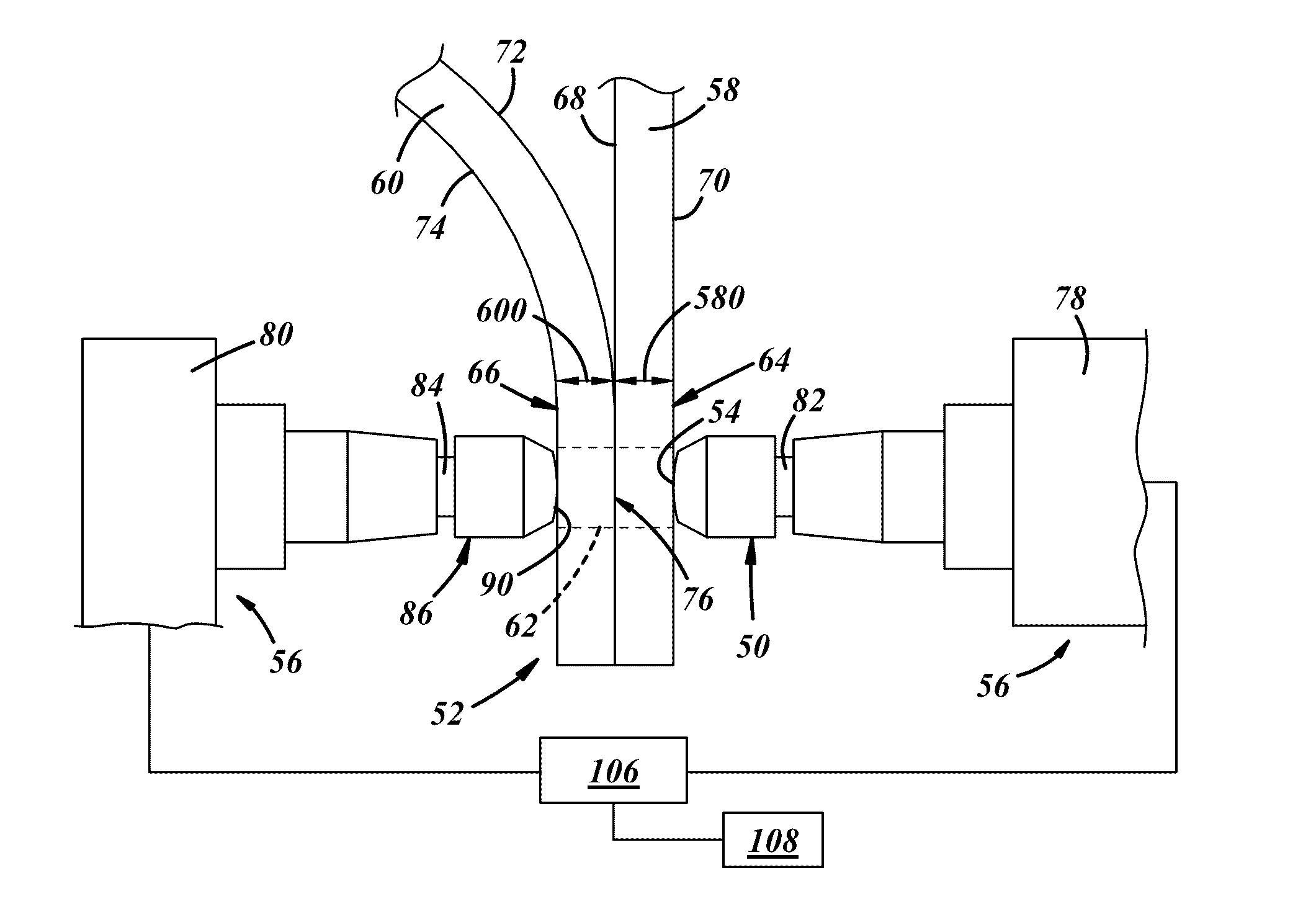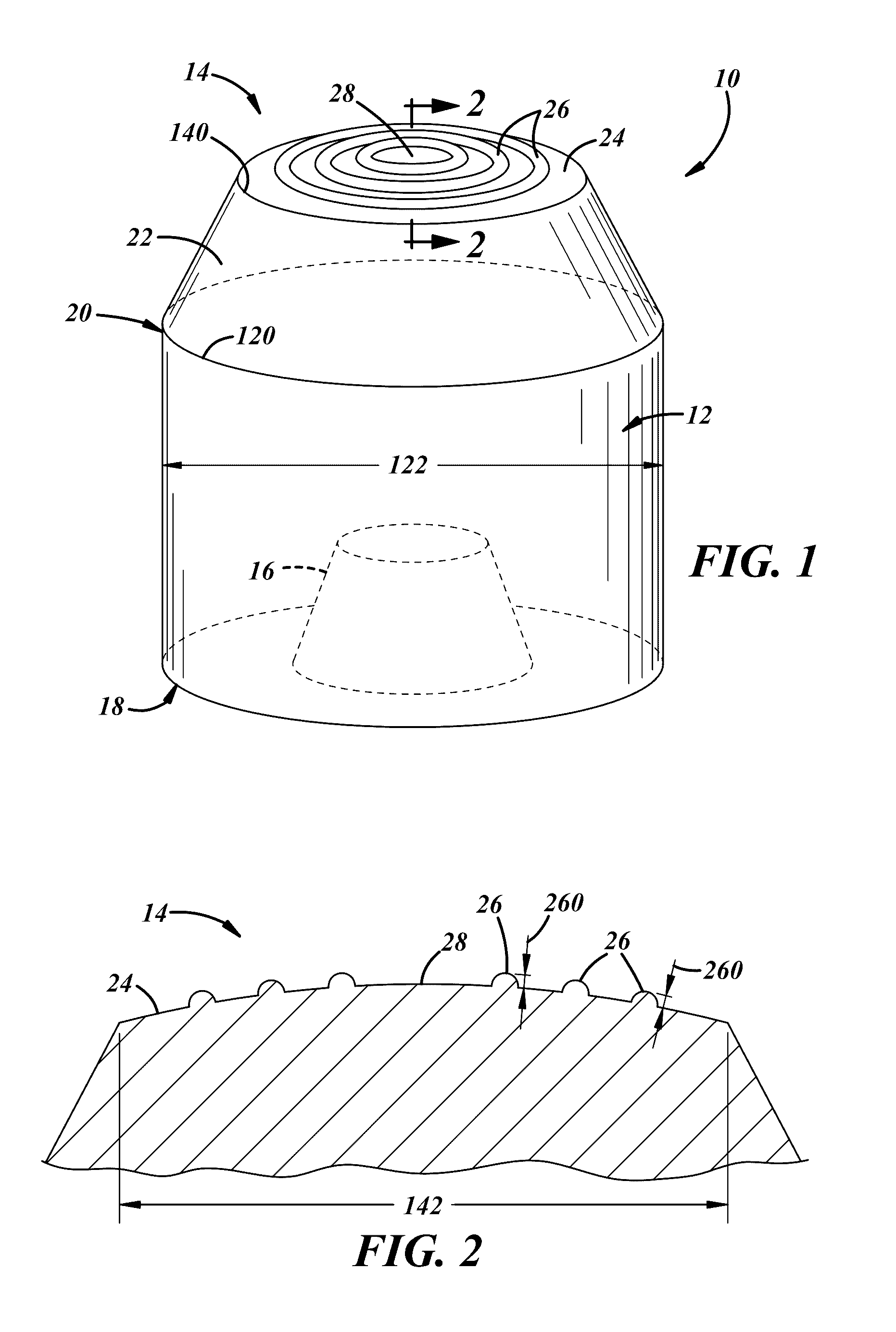Resistive welding electrode and method for spot welding steel and aluminum alloy workpieces with the resistive welding electrode
a resistive welding electrode and spot welding technology, applied in welding/cutting media/materials, welding apparatus, manufacturing tools, etc., can solve the problems of generating heat and a tendency to retain heat for a longer time, and achieve the effect of promoting welding output efficiency and cost containment, and long operational li
- Summary
- Abstract
- Description
- Claims
- Application Information
AI Technical Summary
Benefits of technology
Problems solved by technology
Method used
Image
Examples
Embodiment Construction
[0030]The resistive welding electrode described below includes at least a weld face—which may be smooth or include raised surface features—constructed of a refractory-based material that exhibits an electrical conductivity that is less than or equal to 65% of the electrical conductivity of commercially pure annealed copper as defined by the International Annealed Copper Standard (IACS). In other words, the refractory-based material has an electrical conductivity of less than 3.8×107 S / m. Several embodiments of the resistive welding electrode are depicted in FIGS. 1-3. When used to resistance spot weld a workpiece stack-up that includes an aluminum alloy workpiece arranged in lapped contacting configuration with a steel workpiece, an example of which is shown generally in FIGS. 5-8, the resistive welding electrode is brought into contact with, and pressed against, the aluminum alloy workpiece while a second welding electrode is brought into contact with, and pressed against, the stee...
PUM
| Property | Measurement | Unit |
|---|---|---|
| electrical conductivity | aaaaa | aaaaa |
| diameter | aaaaa | aaaaa |
| diameter | aaaaa | aaaaa |
Abstract
Description
Claims
Application Information
 Login to View More
Login to View More - R&D
- Intellectual Property
- Life Sciences
- Materials
- Tech Scout
- Unparalleled Data Quality
- Higher Quality Content
- 60% Fewer Hallucinations
Browse by: Latest US Patents, China's latest patents, Technical Efficacy Thesaurus, Application Domain, Technology Topic, Popular Technical Reports.
© 2025 PatSnap. All rights reserved.Legal|Privacy policy|Modern Slavery Act Transparency Statement|Sitemap|About US| Contact US: help@patsnap.com



